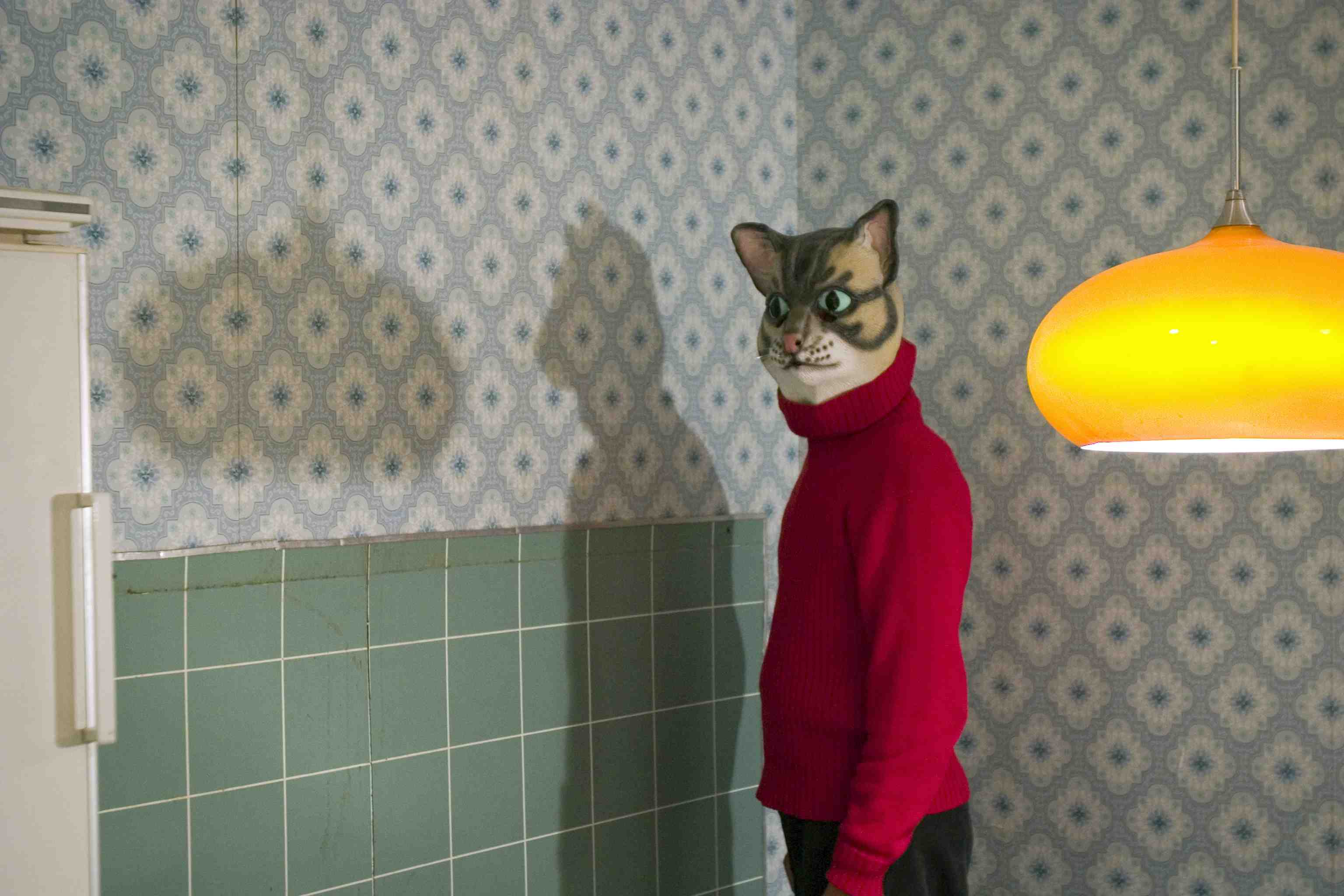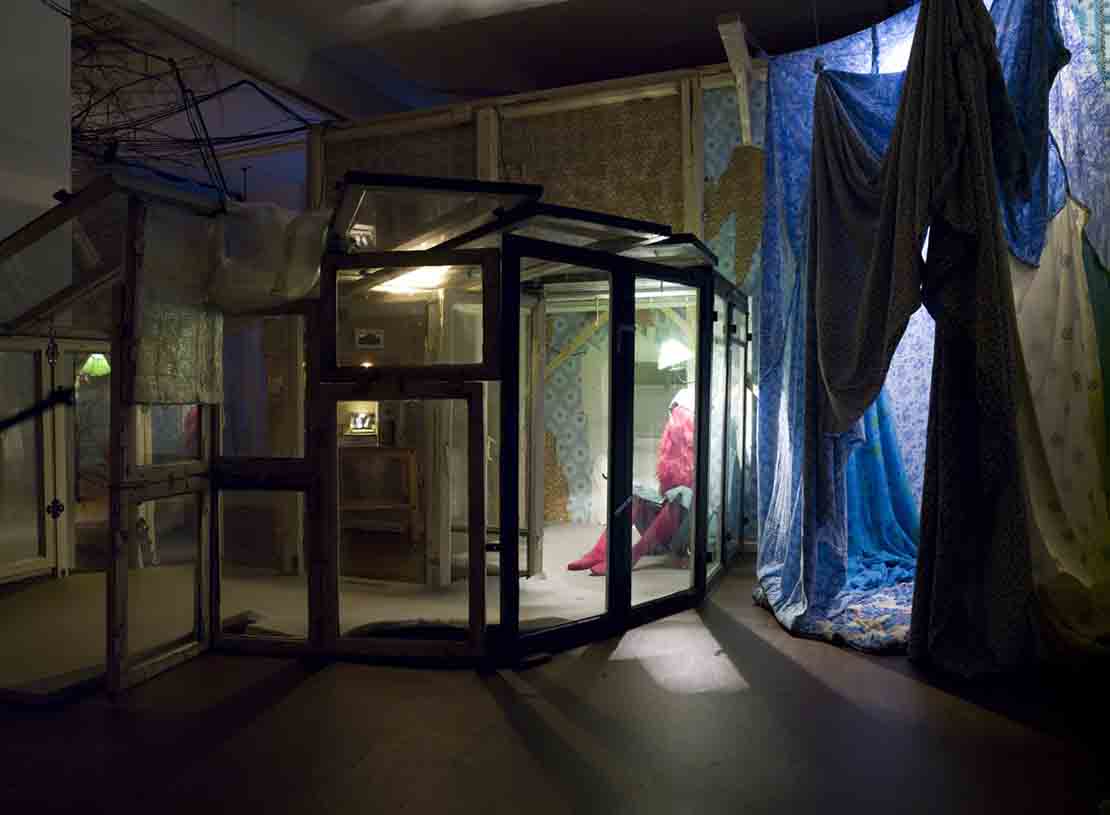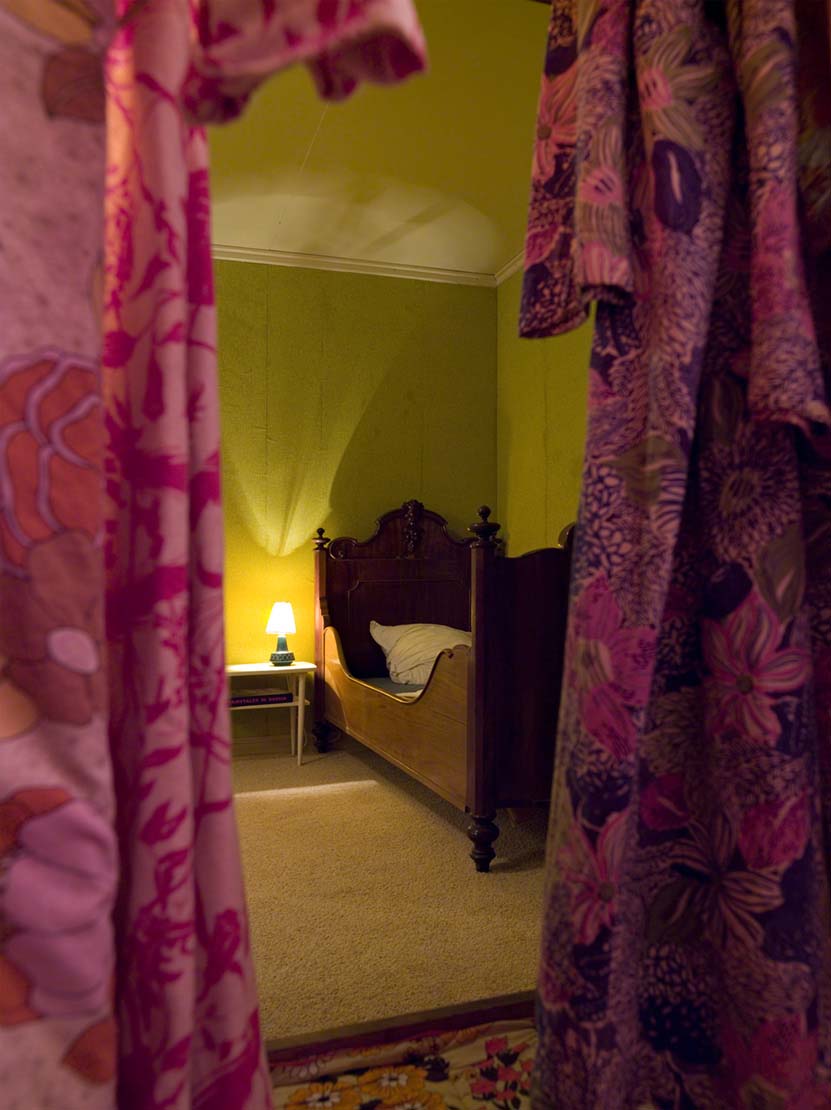The Walls have ears - performance installation
For video please visit youtube part 1
Written by Lotte Boesen Toftgaard, OVERGADEN – Institute of Contemporary Art 
photo: Maria ortman
Seimi Nørregaard is showing a new, extensive installation entitled The walls have Ears One visitor at a time can experience the work that unravels itself somewhere between an installation, a poem and a performance.
The walls have Ears begins with a modest one room apartment that appears to be deserted, but there are faint traces of life in the little home. Via small enticing labyrinthine caves and cavities the visitor is invited to leave this claustrophobic room so to move further around in the installation to the next layer of enigmatic and fantastical tales. From room to room one finds oneself amongst everyday objects from a not so far away past that imaginatively appear side by side with strange natural phenomena, buzzing sounds, familiar smells and, not least, the installation’s fantastical inhabitants.
Ideally the installation should be experienced alone to enhance the intimate and personal experience that Nørregaard wishes to create with her work. The walls have Ears is a poetic and humorous but also disturbing universe that leaves the viewer on guard. However, the visitor’s curiosity is constantly roused and the scene is set for a unique sensory experience with multiple facets where the viewers have their senses of both sound and smell activated and have diverse materials very close to the body.

photo: Anders Sune Berg
As is suggested by the title, the viewer is in The walls have Ears surrounded by a kind of animated architecture that lives and senses. Not only does it register the visitor’s movements, but also suggests an own life behind the walls. In these organic surroundings the viewer becomes a fellow player who, with a heightened sensory apparatus, is urged to interact both physically and mentally with the work. The installation functions as a so-called spatial poem that invites the viewer to be a co-creator of the work, as is the case in the reception of poetry as a literary expression. Nørregaard manages to lay the ground for a new communication with the viewer, or rather the participant, in this versatile work. She has for a number of years worked both as a scenographer, performer and poet, and The walls have Ears contains all these forms of expression and thereby breaks down in a surprising fashion the classical division between art forms.
Nørregaard’s work attempts to erase the borders between the everyday and the fantastical by laying out an array of stories with no linear progression. These carry clear references to childhood and especially to the folk and fairytales that have become our common cultural heritage. The most obvious one is Lewis Carroll’s Alice in Wonderland where the main character also moves from secure and familiar surroundings into a new and fantastical universe that sheds a completely different and magical light upon the objects of everyday life. In Nørregaard’s The walls have Ears t he everyday is in the same way animated anew and the familiar can appear alienated and at times seem to approach the Freudian ”unheimlich”.

photo: Anders Sune Berg
Seimi Nørregaard manages with The walls have Ears to produce a rhythm and different atmospheres that pull everyday objects out of their set predictability and make them accommodating to the powers of the imagination. Apparently recognisable figures and phenomena from a fantastical context start the stories about the everyday, life and death and make room for a personal and very sensory experience.
Performers: Boaz Barkan and Seimi Nørregaard. Sound: Jacob Kirkegaard.
In connection with the exhibition at OVERGADEN, Hurricane are publishing Seimi Nørregaard’s poetry collection Væggene har ører.
The exhibition is supported by The Danish Arts Council’s Interdisciplinary Committee and the National Workshop for Arts and Crafts.